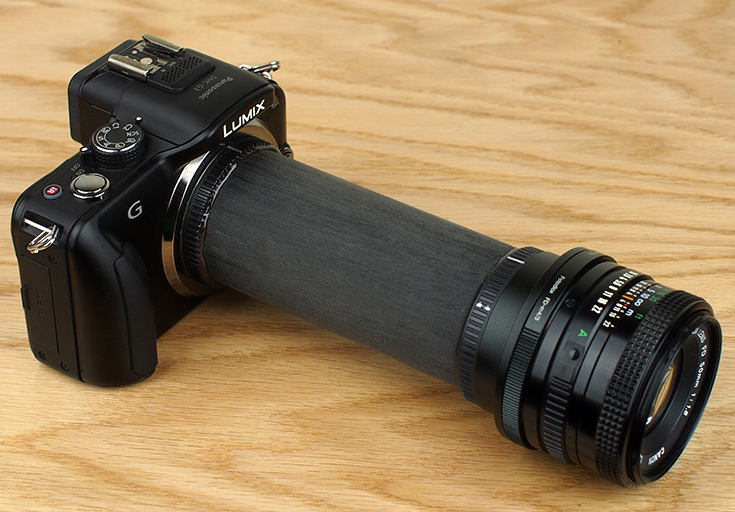I really like macro (close-up) photography but macro lenses are expensive. There are a number of cheaper ways to get nice macro shots and one of them is by moving the lens away from the camera via an extension tube. I came up with a cheap and easy way to make extension tubes from ABS or PVC pipe, a camera body cap, a rear lens cap, and some JB Weld KwikWeld (Amazon link).
This simple style of extension tube doesn’t have electrical contacts between the lens and camera so you might lose aperture and focus control but you can repurpose old manual focus lenses and give them new life this way!
Here’s how I do it.
The link to the online calculator mentioned in the video is here.

I really liked your video! I shoot with a Canon A-1 35mm camera (for which those FD mount lenses were designed). I wonder if you have any tips about pipe diameter and length to use for the A-1.
Thanks.
Steve, I’m glad you liked the video! I have an old Canon AE-1 which I really like but I don’t use too much anymore. I haven’t made an extension tube for it but if I did I would probably use 1 3/4″ diameter pipe but I think 1 1/2″ diameter pipe would probably work too but it depends on how big the rear element is on your lens (1 1/2″ seems like it would work for the lenses I have but I would be tempted to go a little bigger). The length of the pipe is dependent on what lens(es) you plan to use it with. For instance, a 50mm tube would give 1.0X magnification (true macro) to a 50mm f/1.8 lens with 2 stops of light loss and would give 1.6-1.8X magnification to a 28mm f/2.8 lens with 3 stops of light loss. This online calculator is really helpful. Specifications for most fd lenses are pretty easy to find online. When using that calculator, just select any full frame dslr from the drop-down list (e.g. Canon 5D Mark II). The pipe is really cheap and caps are too so it would be easy and cheap to built a few tubes of various lengths. For the two very common lenses I mentioned above, I would probably make a 30mm and a 50mm tube and maybe something crazy like a 75mm or 100mm tube. Hope that helps!
I really enjoyed your video. I’ve always wanted to try photography. I don’t have a good camera, though, and I haven’t been able to take classes. A few years back I had an iPhone 4 and that seemed to take decent pictures. Now I have a Galaxy S4. For some reason, I haven’t been able to get great pictures with this one.
Is there a way to make your own lenses for a Galaxy S4? And, aside from maybe getting lucky and winning an auction at a great price for a camera on eBay, do you have any suggestions for where to find a decent camera for not a lot of money? (I’m disabled and not working.)
Have a good one!
Heather, I’m glad you like the video! First, don’t worry about the quality of your camera. Photography takes practice and you can practice with any camera even the one on your phone. Good photographers can get good photos from bad cameras.
With that said, if you want a better camera that will give you more control over the photo-taking process but don’t have a lot of money, you can find one with some work. I would look into used cameras especially older models. Many photography forums have a classified section where you can find good deals. I’ve used the classified section of mu-43.com with good success to find Micro Four Thirds gear. There are similar websites for other formats too.